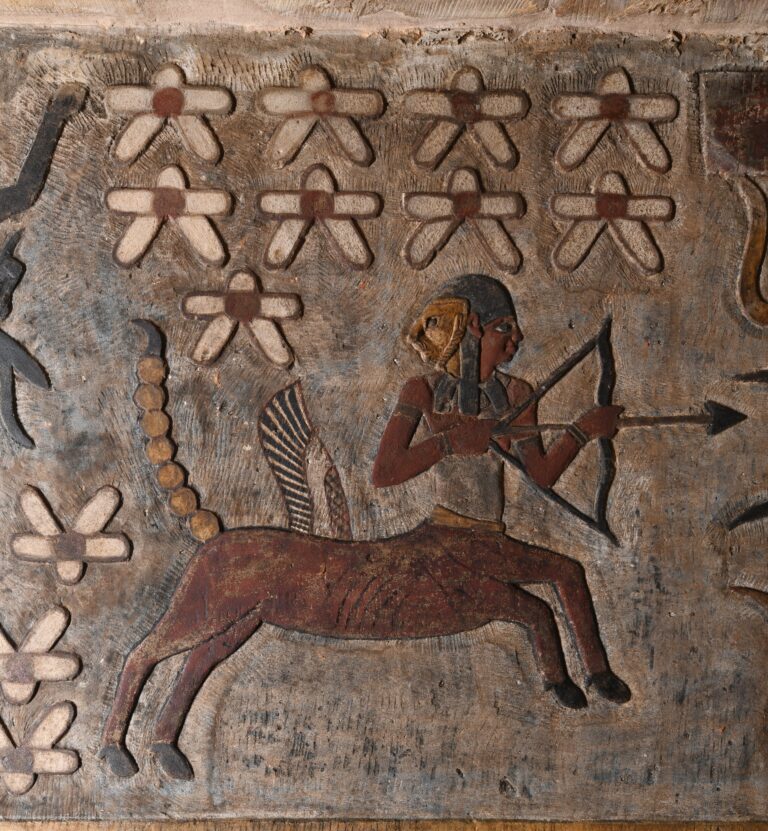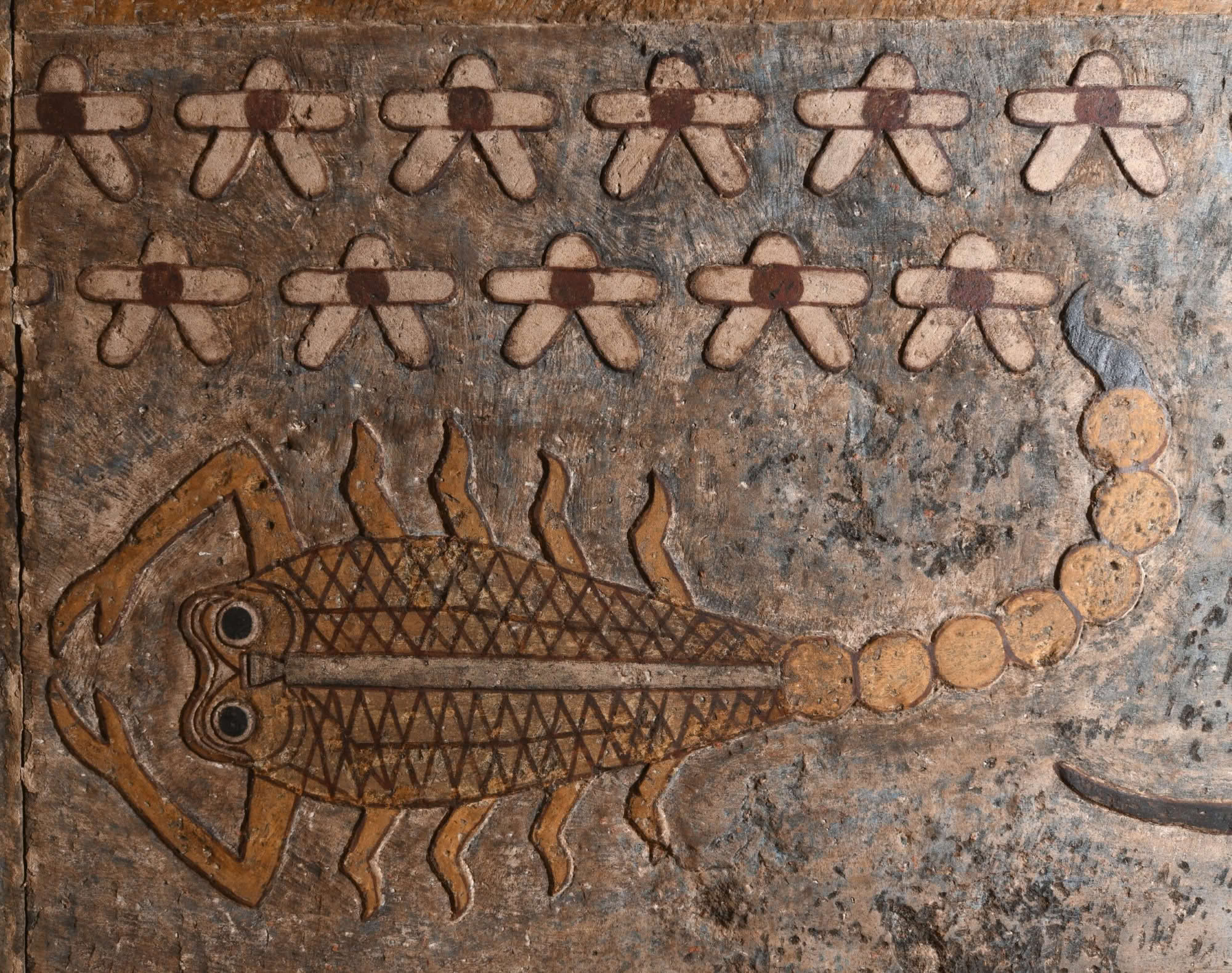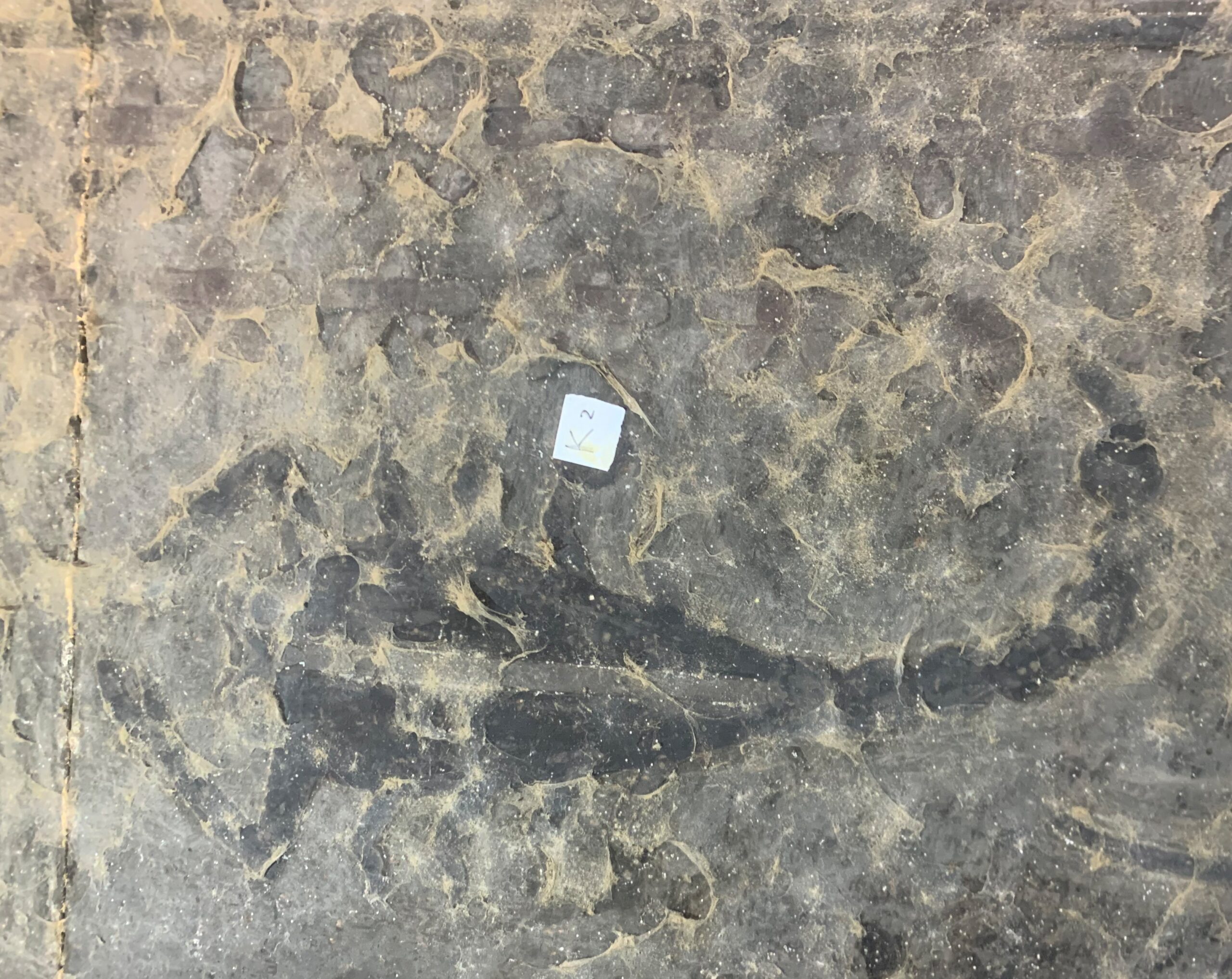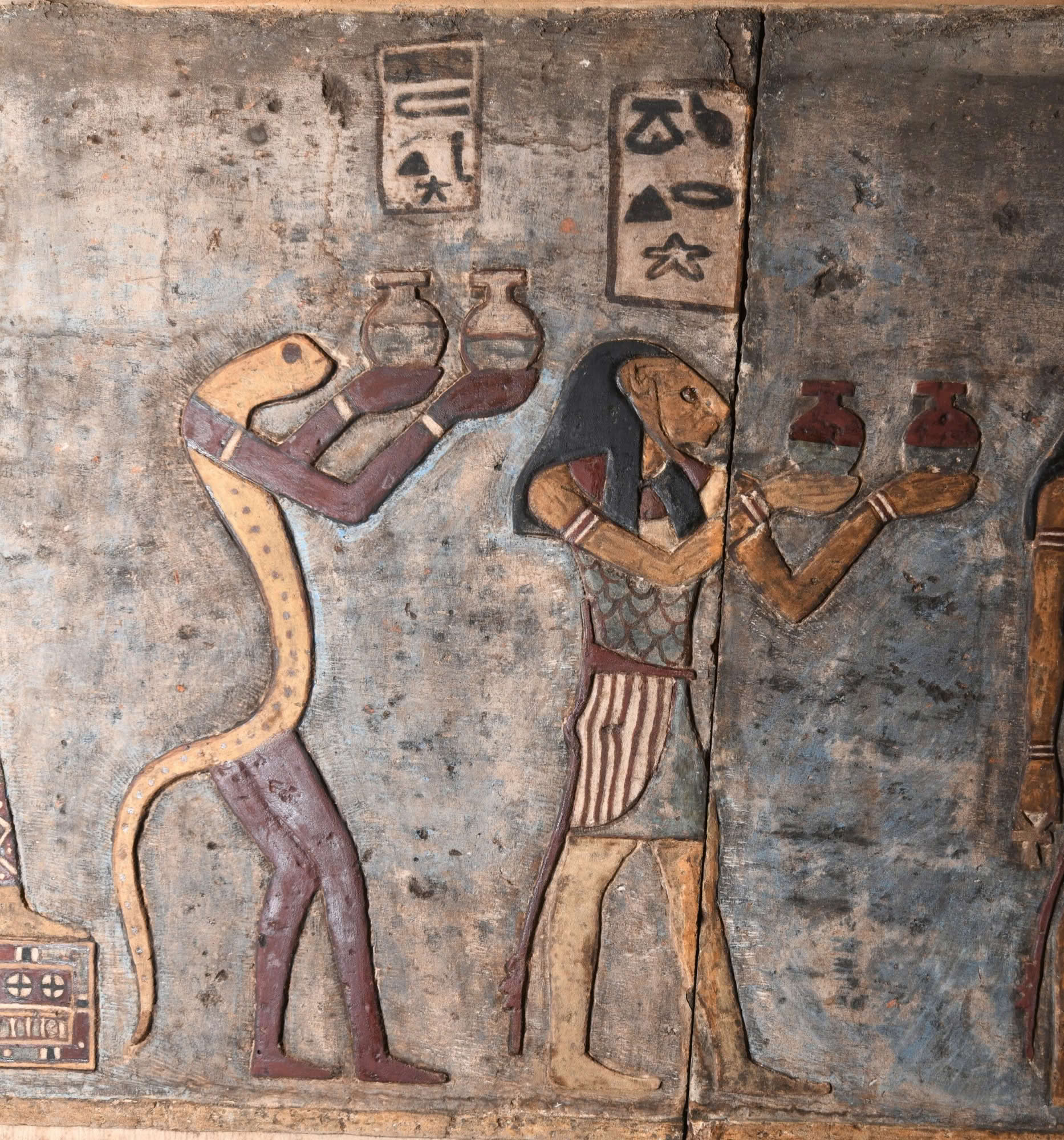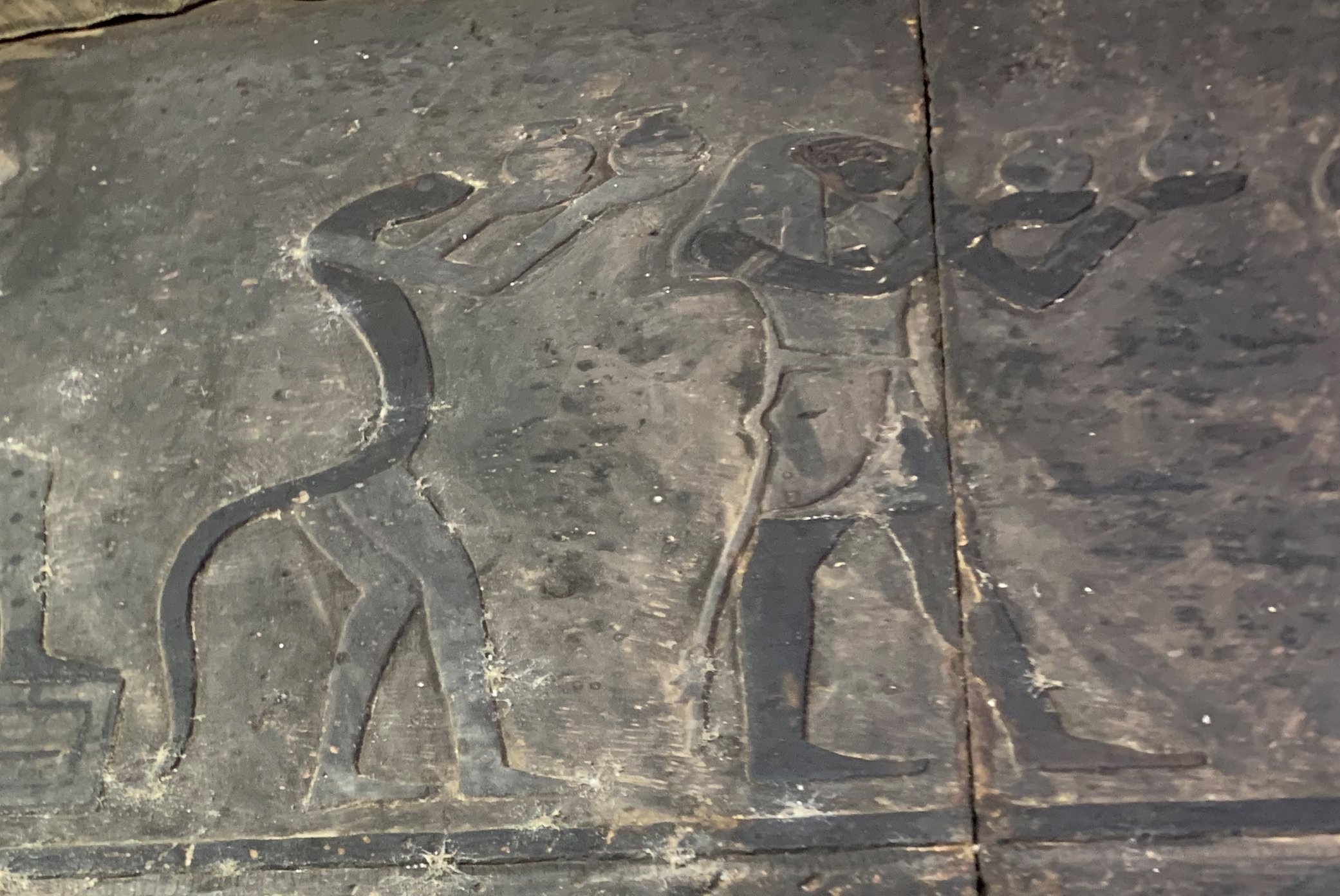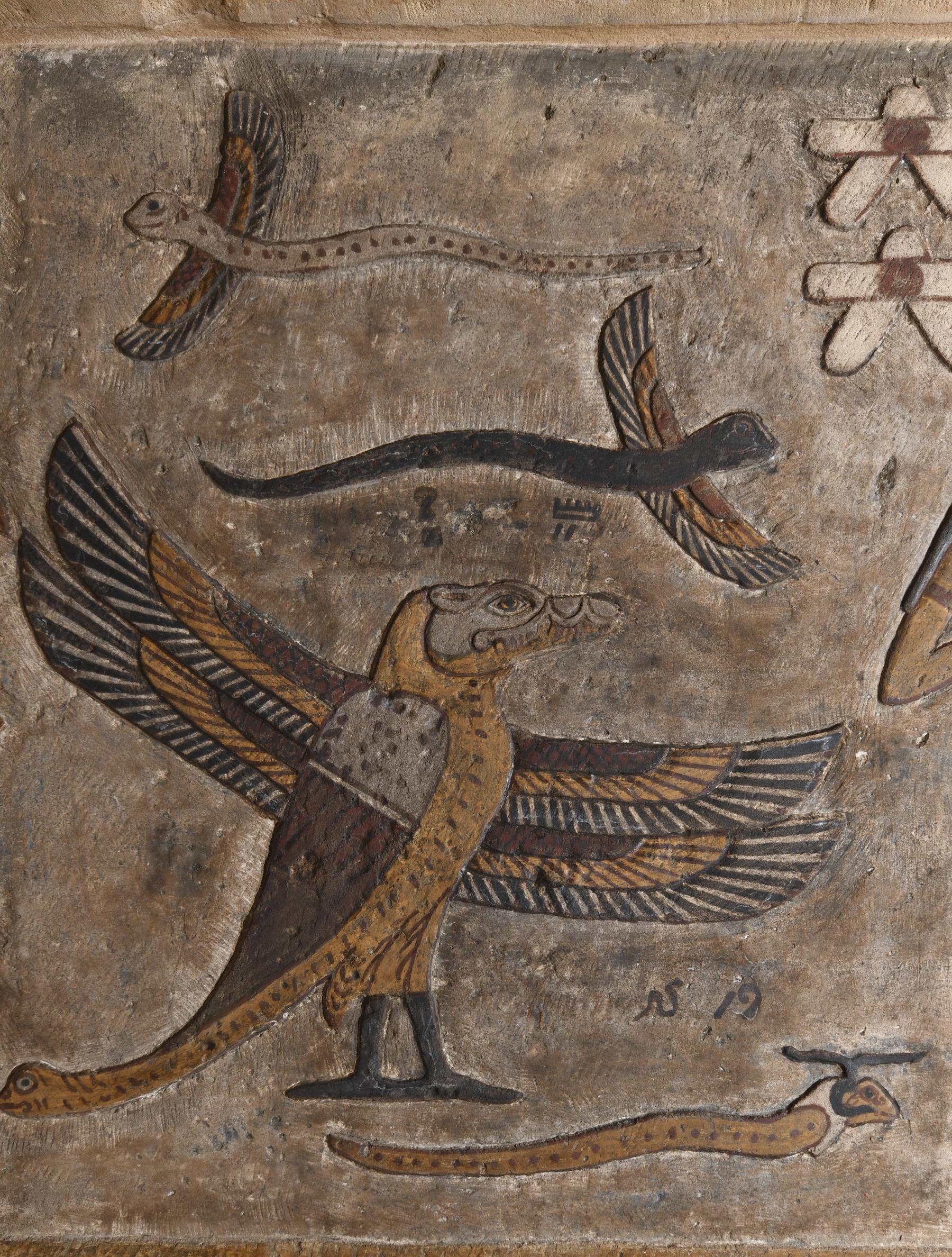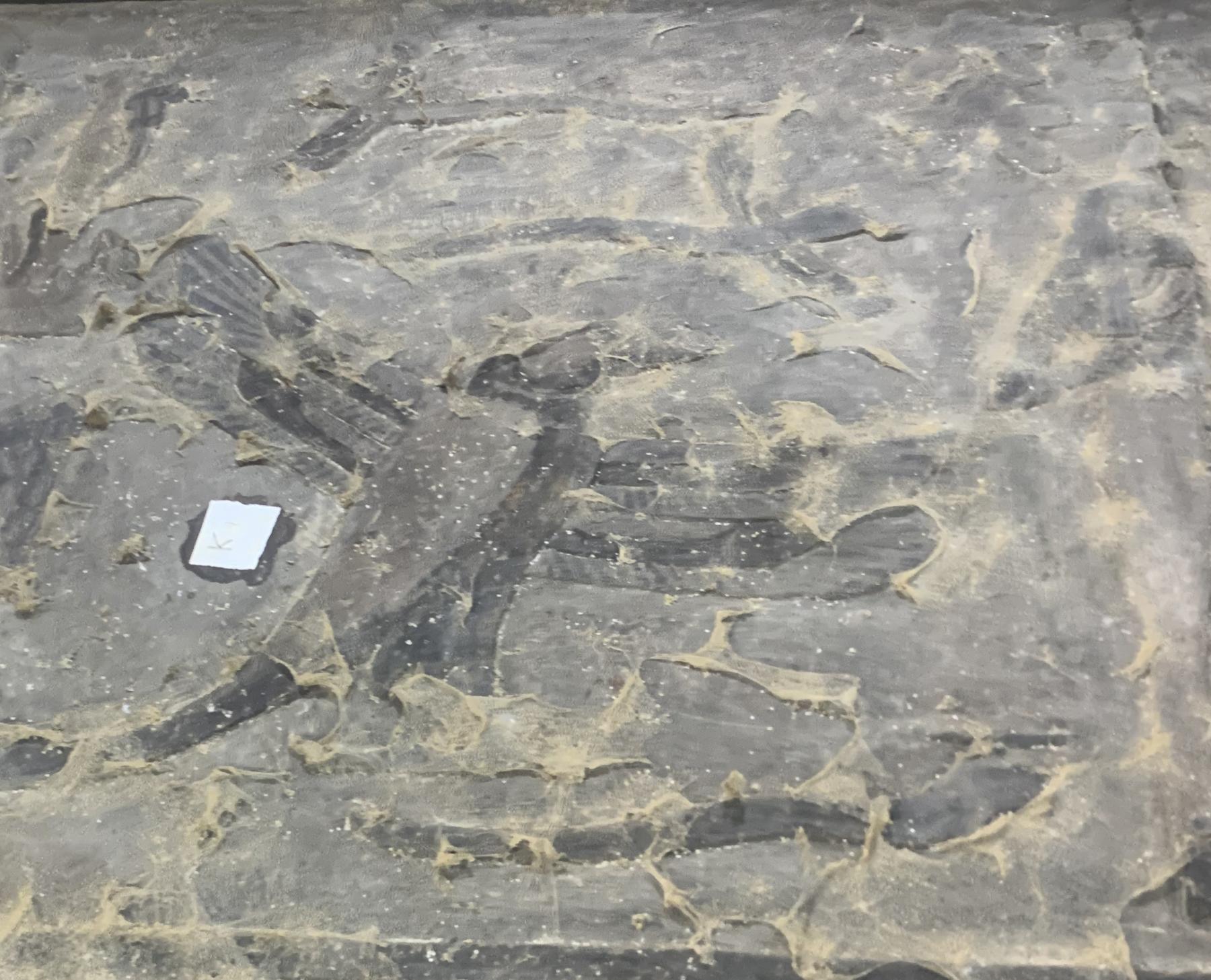Research team uncovers further ceiling paintings in the temple of Esna
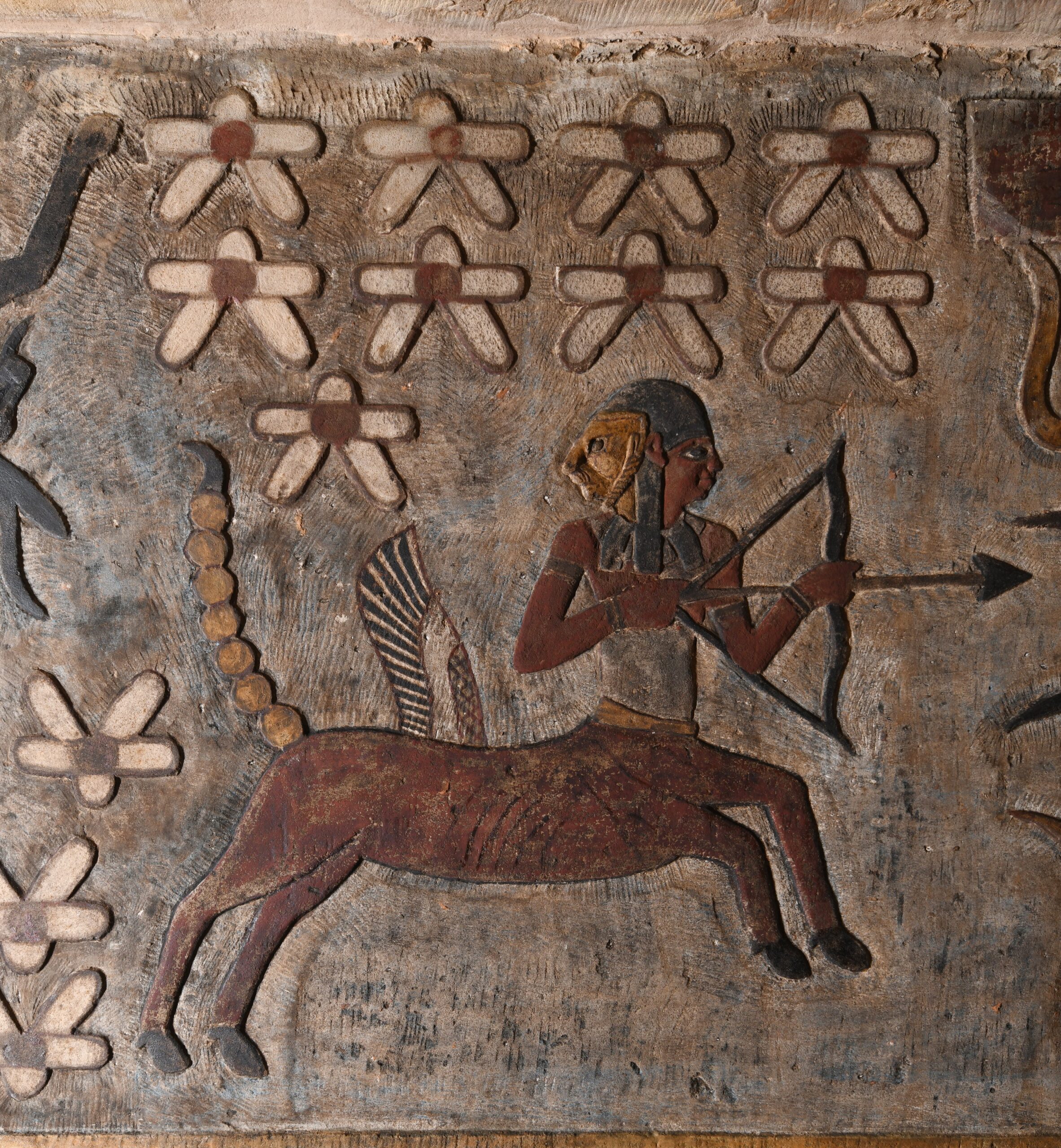
An Egyptian-German research team has uncovered yet another series of colorful ceiling paintings at the Temple of Esna in Upper Egypt. The researchers reported that the Egyptian restoration team, led by Ahmed Emam, succeeded in completely restoring and re-coloring a representation of the heavens. The images, executed in relief, include a complete depiction of the signs of the zodiac. Other reliefs show the planets Jupiter, Saturn and Mars, as well as a number of stars and constellations used in ancient times to measure time. The overall project is in the hands of Hisham El-Leithy of the Egyptian Ministry of Tourism and Antiquities and Professor Christian Leitz of the University of Tübingen.
“Representations of the zodiac are very rare in Egyptian temples,” Leitz says, adding “The zodiac itself is part of Babylonian astronomy and does not appear in Egypt until Ptolemaic times.” Researchers think the system of zodiac signs and their related constellations was introduced to Egypt by the Greeks and subsequently became popular. “The zodiac was used to decorate private tombs and sarcophagi and was of great importance in astrological texts, such as horoscopes found inscribed on pottery sherds,” says Dr. Daniel von Recklinghausen, a Tübingen researcher. “However, it is rare in temple decoration: Apart from Esna, there are only two completely preserved versions left, both from Dendera,” he says.
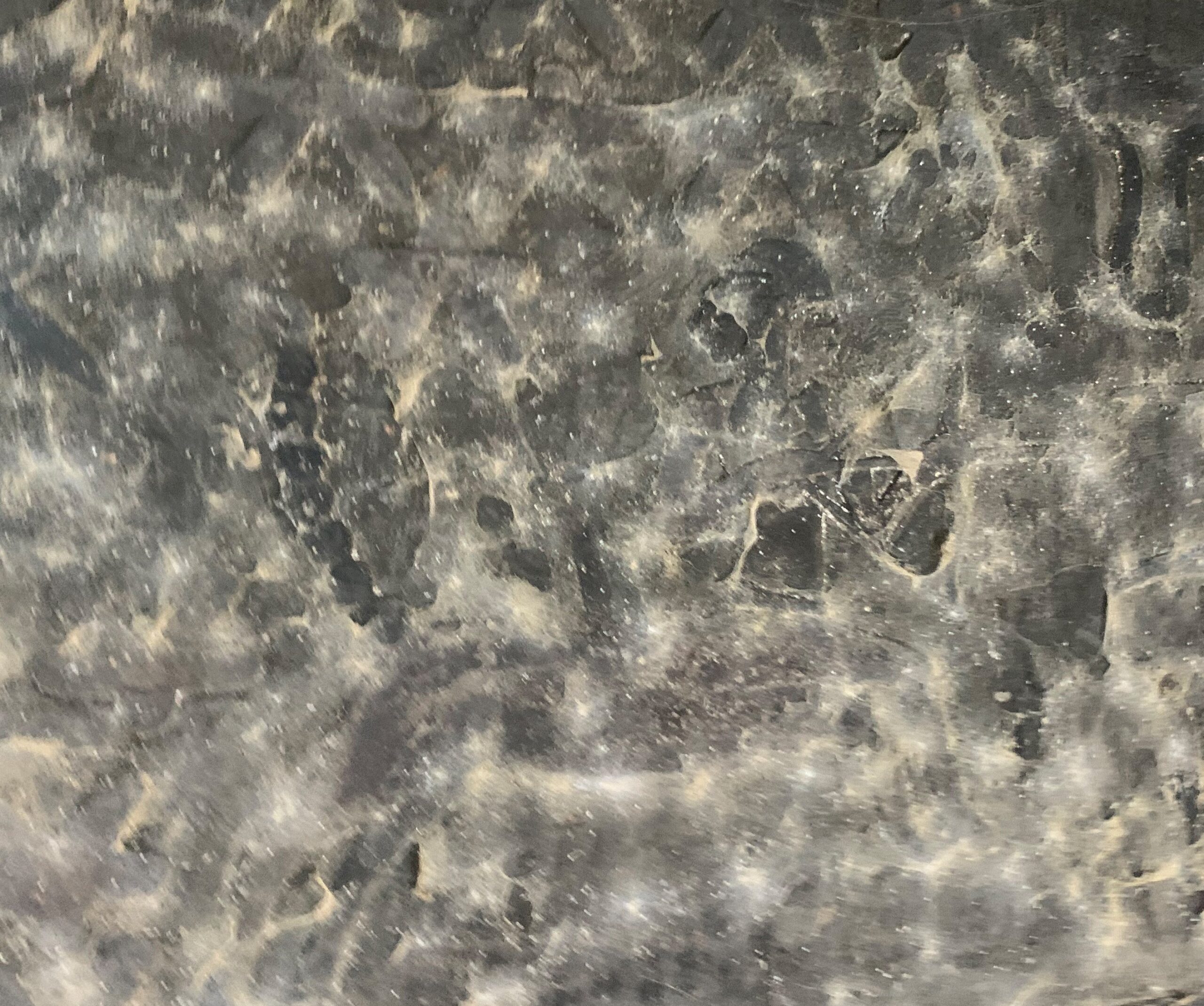
In addition to the zodiac and the star constellations, the restoration revealed colorful images of snakes, crocodiles and various fabulous beasts, including a snake with a ram’s head and a bird with a crocodile’s head, the tail of a snake and four wings. During the restoration, the researchers also discovered previously unknown inscriptions. In the temple of Esna, the colors had been covered by a layer of dirt and soot – and thus preserved – for nearly 2,000 years. However, the ceiling paintings and inscriptions were barely recognizable for centuries because they were so dirty.
The temple is in Esna, 60 kilometers south of Luxor in Egypt. Only the vestibule (called the pronaos) remains, but it is complete. At 37 meters long, 20 meters wide and 15 meters high, the sandstone structure was placed in front of the actual temple building under the Roman Emperor Claudius (41–54 AD) and probably eclipsed it. Its location in the middle of the city center probably contributed to the fact that the vestibule was preserved and was not used as a quarry for building materials as other ancient edifices were during the industrialization of Egypt. Even in Napoleon’s time, the pronaos attracted attention among scholars, as it was considered an ideal example of ancient Egyptian temple architecture. The restoration work has been ongoing for five years, sponsored by the American Research Center in Egypt, the Ancient Egypt Foundation and the Gerda Henkel Foundation.
Press release from the University of Tübingen

